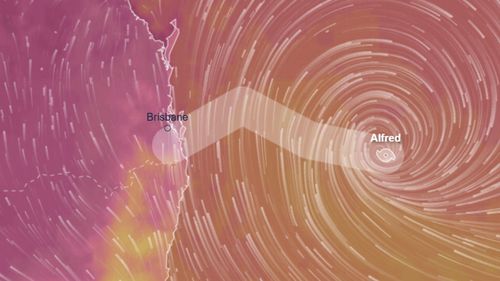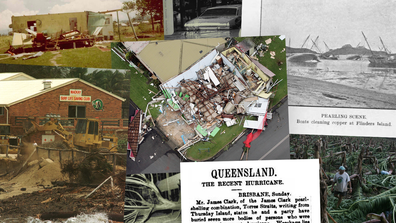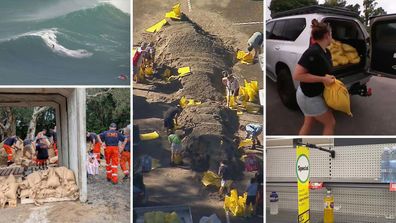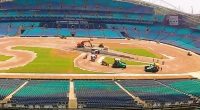More than 4 million people from Sandy Cape to Grafton have been warned that the storm will strike by the end of the week, bringing with it intense rainfall, dangerous winds and possible flash-flooding.
Here’s everything you need to know about when and where Cyclone Alfred is predicted to strike.

When will Cyclone Alfred make landfall?
Cyclone Alfred is still predicted to make landfall on Thursday night or Friday morning.
“As the system moves closer towards the coast and at this time looks to be approaching the coast late Thursday into early Friday morning, those winds will continue to increase,” BoM spokesperson Sue Oates said.
Damaging wind gusts up to 130km/h are expected to lash the southeast Queensland and northeastern New South Wales coasts starting from Wednesday.
There have also been large swells over 7m already recorded.
Heavy rainfall will come next, with possible daily totals of 200 to 400 millimetres, and could cause flash-flooding.
At the time of writing Alfred was sitting 600km east of Brisbane, the bureau told media today in Queensland’s capital.

Australia’s most destructive cyclones
Where is Cyclone Alfred likely to hit?
Cyclone Alfred is expected to affect the southeast Queensland coast and some parts of northeast New South Wales.
The Bureau of Meteorology currently lists the areas from Sandy Cape to Grafton as ‘watch zones’, including Brisbane, the Gold Coast, Sunshine Coast, and Byron Bay.
The northern NSW towns of Ballina and Lismore are also preparing for the cyclone.
However, the effects of the cyclone – especially strong winds – may extend beyond the currently listed regions.

Millions brace for Cyclone Alfred as wind and rain forecast to smash coast
What time will Cyclone Alfred hit Brisbane?
Cyclone Alfred is currently predicted to hit Brisbane late on Thursday night or early Friday morning, bringing damaging winds, intense rain and possible flooding.
How far is Cyclone Alfred from Brisbane?
As of Tuesday morning, Cyclone Alfred is building about 560 kilometres east of Brisbane.
At the time of writing, it is listed as a category 2 storm with wind gusts near the center hitting up to 130km/h. BOM will continue tracking the storm as it creeps closer to the coast.






